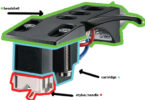ALU vs CPU
Summary: Difference Between ALU and CPU is that arithmetic logic unit (ALU), another component of the processor, performs arithmetic, comparison, and other operations. While Processor also central processing unit (CPU), interprets and carries out the basic instructions that operate a computer.

ALU
The arithmetic logic unit (ALU), another component of the processor, performs arithmetic, comparison, and other operations. Arithmetic operations include basic calculations such as addition, subtraction, multiplication, and division. Comparison operations involve comparing one data item with another to determine whether the first item is greater than, equal to, or less than the other item. Depending on the result of the comparison, different actions may occur.
CPU
The Processor also central processing unit (CPU), interprets and carries out the basic instructions that operate a computer. The processor significantly impacts overall computing power and manages most of a computer’s operations. On a personal computer, all functions of the processor usually are on a single chip. Some computer and chip manufacturers use the term microprocessor to refer to a personal computer processor chip.
Most processor chip manufacturers now offer multi-core processors. A processor core contains the circuitry necessary to execute instructions. The operating system views each processor core as a separate processor. A multi-core processor is a chip with two or more separate processor cores. Two common multi-core processors are dual-core and quad-core. A dual-core processor is a chip that contains two separate processor cores. Similarly, a quad-core processor is a chip with four separate processor cores.
Each processor core on a multi-core processor generally runs at a slower clock speed than a single-core processor, but multi-core processors typically increase overall performance. For example, although a dual-core processor does not double the processing speed of a single-core processor, it can approach those speeds. Multi-core processors also are more energy efficient than separate multiple processors, requiring lower levels of power consumption and emitting less heat in the system unit.
Also Read:







Leave a Comment
You must be logged in to post a comment.